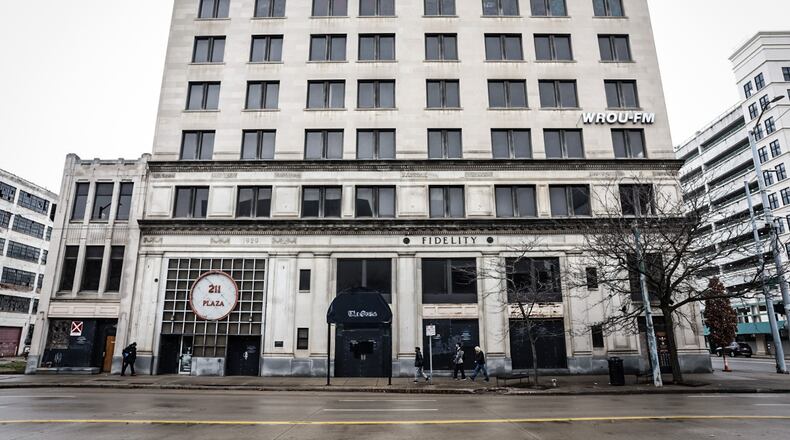The two projects selected for Ohio Historic Preservation Tax Credits in the Dayton area include:
The Fidelity Medical Building, 211 S. Main St., will be receiving $4.9 million in tax credits toward the $50.6 million total project cost.
The 11-story building, located across Fifth and Main streets from the Levitt Pavilion and the Dayton Convention Center, is undergoing a multi-million dollar renovation. It once housed a savings and loan business with many medical professional offices on the upper floors but has been vacant since 2009.
The developers plan to convert the building to 101 residential units and two food and entertainment tenants on the ground floor.
St. Paul Evangelical Lutheran Church & Parish Hall, 239 Wayne Ave., will be receiving $2 million in tax credits toward the total estimated project cost of more than $22 million.
The building was constructed round 1869 in Dayton’s Oregon District, near the intersection of Fifth Street and Wayne Avenue. The adjacent Parish Hall was added in 1955.
The church continued to serve as a home for its congregation until it was vacated in 2017. The church sanctuary will be renovated into a restaurant and event space, while parts of the parish hall will become a gallery and event space. Former classrooms and offices will become 26 hotel guest rooms.
A new construction component of the project will occupy what is now an adjacent parking lot and will hold 46 additional guest rooms, according to plans.
The awards will assist private developers in rehabilitating historic buildings in downtowns and neighborhoods, according to state officials. Many of the buildings are vacant today and generate little economic activity. Developers are only issued the tax credit once project construction is complete and all program requirements are verified.
“Historic preservation is so much more than just updating old buildings. We’re preserving what exists and making concerted efforts to weave this history into the fabric of Ohio’s future,” Gov. Mike DeWine said. “By restoring our historical assets, we’re ensuring that these structures remain part of their communities for years to come.”
The Ohio Historic Preservation Tax Credit program is administered in partnership with the Ohio History Connection’s State Historic Preservation Office. The State Historic Preservation Office determines if a property qualifies as a historic building and that the rehabilitation plans comply with the United States Secretary of the Interior’s Standards for Rehabilitation.
About the Author


